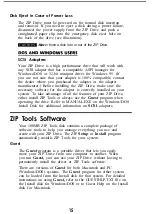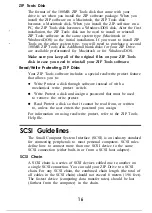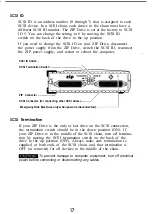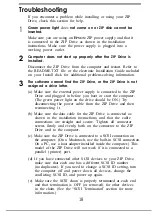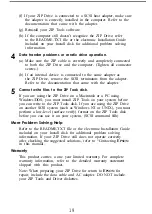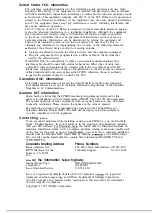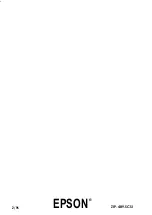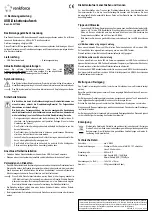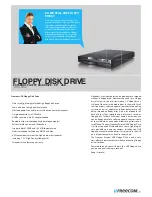
United States FCC Information
The computer equipment described in this installation guide generates and uses radio
frequency (RF) energy. If the equipment is not installed and operated in strict accordance
with the manufacturer’s instructions, interference to radio and television reception may result.
n
Interference This equipment complies with Part 15 of the FCC Rules and its operation is
subject to the following conditions: (1) the equipment may not cause harmful interference,
and (2) the equipment must accept any interference received, including interference that
may cause undesired operation.
Part 15, Class B. of the FCC Rules, is designed to provide reasonable protection against
radio and television interference in a residential installation. Although the equipment
has been tested and found to comply with allowed RF emission limits, as specified
in the above cited Rules, there is no guarantee that interference will not occur in a
particular situation. Interference can be determined by turning the equipment off
and on while monitoring radio or television reception. The user may be able to
eliminate any interference by implementing one or more of the following measures:
Reorient the affected device and/or its receiving antenna.
n
Increase the distance between the affected device and the computer equipment.
n
Plug the computer and its peripherals into a different branch circuit from that
used by the affected device.
WARNING Only the manufacturer’s cable or an equivalent double shielded, host
interface cable should be used with external subsystems. Other types of cable may
violate FCC rules and regulations. AC Adapter with ferrite core must be used for RF
interference suppression. Also, changes or modifications to the electronics or enclosure
of this product must be expressly approved by EPSON; otherwise, the user’s authority
to operate the equipment may be voided by the FCC.
Canadian DOC Information
This digital apparatus does not exceed the Class B limits for radio noise emissions
from digital devices as set out in the Radio Interference Regulations of the Canadian
Department of Communications.
German BZT information
Epson hereby certifies that the EPSON-manufactured equipment referenced in this
guide is in compliance with the requirements of BMPT Vfg 243/1991 RF suppression.
The normal operation of some equipment (such as signal generators) may be subject
to specific restrictions. Please observe the notices in the owner’s manual.
The marketing and sale of the equipment was reported to the Central Office for
Telecommunication Permits (BZT). The BZT has the right to retest this equipment
to verify compliance with the regulation.
Contacting
E
P S O N
If you encounter problems while installing or using your ZIP Drive, you can find help
under “Troubleshooting” in your manual or in the electronic documentation included
with your ZIP software. For Macintosh users, the Install disk for Macintosh includes an
electronic Installation Guide with a complete problem solving section-just double-click
on the icon for the guide to open it. For PC users, you can access a complete installation
manual from the Windows/DOS Install Disk by entering
at the DOS prompt.
Two text files on the Install disk also contain help information (README.TXT and
Corporate Mailing Address
Phone Numbers
America, Inc.
ZIP Drive Help Information: 800-922-8911
Madrona Avenue
Technical Support
310-782-2600
Torrance, CA 90503
USA
E
PSON
on the Information Super highway
Internet Home Page:
CompuServe:
GO EPSON
Download Service:
310-782-4531
is a registered trademark of Seiko E
PSON
Corporation.
is a registered
trademark, and the Iomega logo and ZIP are trademarks of
Corporation.
All other company and product names mentioned in this document are trademarks
of their respective companies.
Copyright 1995
Corporation.










